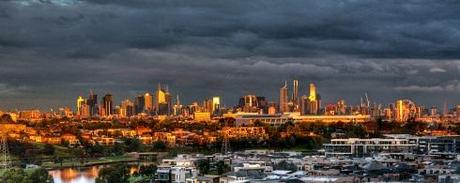
How will we explain to our children and grandchildren why we destroyed their future?
This was the question on the cover of the programme for this year’s Sustainable Green Infrastructure Conference. In truth, there is no more compelling reason to reduce our cities’ environmental impact; if we continue on our current course we may well need to explain to our grandchildren why we did nothing to stop their futures being ruined.
Indeed, all in attendance at the British Library for this year’s Sustainable Green Infrastructure Conference were meeting to discuss how best we can reduce our cities’ environmental impact and ensure we don’t end up having to answer this question.
Whilst the conference heard from 12 leading experts in the field of green infrastructure, below is an overview of three talks which stood out.
Prof. Paul Ekins - ‘Greening the Recovery’
“The type of economic growth we’ve experienced in the past cannot happen again. Old models of growth are bust. It’s now about green growth or nothing”
Professor Ekins talked passionately about the current window of opportunity to build a green economy and why this would not only be good for the environment but the economy too.
He called for the Government to adopt a clear approach to prioritising key infrastructure projects and ensure that any investment is compatible with long term green objectives.
According to the Professor, the benefits of a green economy are:
- Climate Stability - action to mitigate climate change is cost effective given the huge cost of inaction
- Resource Security - resources are becoming more scarce and therefore by maximising any usage we reduce resource constraints
- Environment Quality - a healthy environment benefits both the economy and our well-being
He also reported that the three core pillars of a green economy are:
1. Innovation
2. Infrastructure
3. Information
The professor warned of the dangers of “carbon lock-in”, whilst he also called for a more integrated approach to transport.
Pof. Cedo Maksimovic - ‘Blue Green Dream’
“If we wait for the Government to make these decisions it will be too late. We have to shift the public mindset”
Professor Cedo Maksimovic outlined his ‘Blue Green Dream’ project which he hopes will impact every street over the next 100 years. He described it as “innovative urban planning”.
The Blue Green idea is based on the notion that green projects are only truly beneficial when combined with blue infrastructure. The project is designed to help towns and cities adapt to the challenge of climate change.
One of the aims of the project is to increase the number of green roofs which will positively impact the environment. According to the Professor, “40% of the total area in London is roofs and we currently waste most of this space.” Green roofs would reduce temperature and manage rainwater runoff - a particular issue in London.
A colleague of Professor Maksimovic also said ““When we have heavy rainfall on roofs or pavements, water runs off into the drains. This fills up our old sewers which weren’t designed to handle the flash floods we’re increasingly experiencing with climate change. The water then mixes with raw sewage and spills into the Thames and, in some case, our streets.”
Professor Maksimovic ended his speech with a stark warning to planners, questioning whether we have to wait for London to have a natural disaster to think differently and cited examples of other cities who had only woken up to the danger after such a disaster.
Peter Massini - “London’s Green Infrastructure - the Mayor’s Vision”
“We haven’t had a severe climatic event yet so it is not at the forefront of the public’s mind”
Peter Massini who works for the Greater London Authority presented the major outcomes from the ‘London Infrastructure Plan 2050’ report.
He started with a few statistics that showed the scale of the challenge London faces; the population of London is now back to where it was in 1940 and by 2050 the population will exceed 11 million.
It was also revealed that demand for water will increase significantly but the supply is expected to decrease. This will mean that there will be a deficit of over half a billion litres per day by 2050 if we do nothing to counter this issue.
Public transport will also feel the strain; by 2050 we will need a 50% increase in public transport.
Mr Massini confirmed that the current plan to deal with population growth is to contain it within the existing boundaries of London and not to expand further out.
The London Infrastructure Plan outlines what is needed to make London a better city to live in:
1. Less congested, better connections across the transport system, safe and accessible to all
2. Being able to connect to the ‘internet of things’ from every corner of the city
3. Housing, schools and great communities for all
4. Reusing more materials to save money and the environment
5. Sustainable and affordable energy and water
6. More and better green space
Mr Massini reiterated an earlier comment by Professor Cedo Maksimovic when he said “we haven’t had a severe climatic event yet so it is not at the forefront of the public’s mind.”
Anyone who wants to learn more the challenges and solutions presented in the London Infrastructure should visit the Greater London Authority website.
